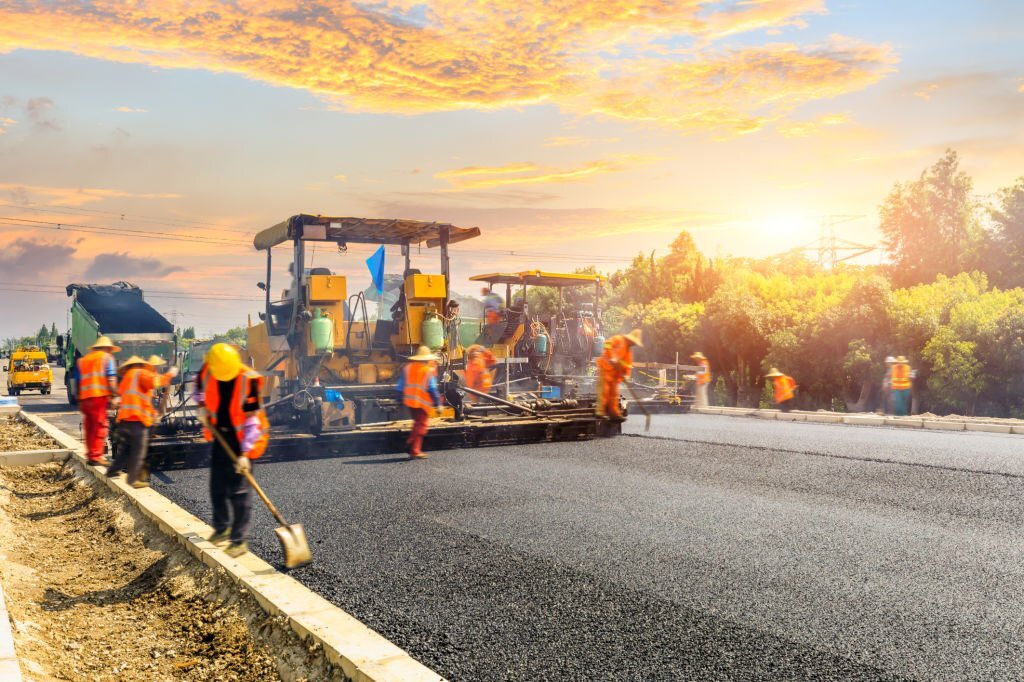
1. Slope Sensors and Automatic Grade Control Systems
Pavers utilize slope sensors and automatic grade control systems to achieve precise paving on slopes and uneven terrain:
Laser and Sonic Slope Sensors
Slope sensors use lasers or sonic signals to measure the elevation of the existing surface and provide real-time data to adjust the paver’s height accordingly.
Slope Sensor Feedback
The feedback from slope sensors allows the paver to make continuous adjustments to the screed elevation, ensuring uniformity in the paved surface.
Automatic Grade Control
Automatic grade control systems use the data from slope sensors to automatically control the height of the screed, minimizing manual adjustments.
2. Adjustable Screeds
Screeds are essential components of pavers that play a crucial role in achieving smooth and uniform pavement surfaces:
Hydraulic Screed Extensions
Hydraulic screed extensions can be adjusted to accommodate varying widths, enabling efficient paving on wide or narrow surfaces.
Floating Screeds
Floating screeds maintain consistent contact with the surface, allowing them to follow the contour of uneven terrain and deliver a smooth finish.
Tilt and Crown Adjustment
Some screeds offer tilt and crown adjustment capabilities, allowing operators to achieve proper drainage and surface profile.
3. Paver Stability and Steering Control
Stability and steering control are crucial for maintaining paver alignment and surface accuracy:
Crawler Tracks
Pavers equipped with crawler tracks offer enhanced stability and traction, ensuring smooth movement on uneven terrain.
Steering Sensitivity
Adjustable steering sensitivity allows operators to fine-tune the paver’s steering response for better control on slopes.
All-Wheel Drive
All-wheel-drive pavers deliver optimal traction and stability, enabling them to handle challenging terrains.
4. Controlling Material Flow
Efficient material flow is vital for achieving uniform pavement surfaces:
Material Feed Sensors
Material feed sensors monitor the flow of asphalt or concrete, ensuring a consistent supply to the screed.
Auger and Conveyor Speed Control
Operators can adjust the auger and conveyor speed to match the paver’s forward movement, preventing material buildup and ensuring a uniform surface.
Anti-Segregation Systems
Anti-segregation systems prevent material segregation and ensure consistent mix quality throughout the paving process.
5. Intelligent Steering Systems
Intelligent steering systems enhance paver maneuverability on uneven terrain:
Four-Track Steering
Pavers equipped with four-track steering offer improved maneuverability and stability, especially in tight spaces or complex paving patterns.
Independent Track Control
Independent track control allows each track to operate individually, enabling better cornering and precision steering.
Steering Radius Control
6. Material Compaction and Smoothness
Achieving proper material compaction and smoothness is essential for durable and uniform pavement surfaces:
Vibratory Compaction Systems
Vibratory compaction systems consolidate the material, increasing its density and strength.
Tamper Bars
Tamper bars help achieve smooth surfaces by settling the material and removing air voids.
Paver Oscillation
Some pavers feature oscillating screeds, which aid in material compaction and smoothness by providing lateral movement.
7. Paving Patterns and Overlapping
Paving patterns and overlapping techniques contribute to even and seamless surfaces:
Parallel Paving Patterns
Parallel paving patterns allow for continuous paving, reducing the chance of surface irregularities.
Overlapping Passes
Overlapping passes ensure complete coverage and uniform compaction of the paved surface.
Feathering Edges
Feathering the edges of adjacent passes helps eliminate visible seams and achieve a seamless surface.
8. Support from Additional Equipment
Support from additional equipment enhances the paver’s performance on challenging terrains:
Material Transfer Vehicles (MTVs)
MTVs facilitate the smooth and continuous transfer of material to the paver, reducing stops and starts.
Compactors and Rollers
Compactors and rollers follow the paver to provide additional compaction and smoothness to the paved surface.
Trimming Equipment
Trimming equipment can be used to shape and level the base course before the paver begins paving.
9. Human Operator Skill and Judgment
Despite advanced technology, human operator skill and judgment remain crucial for optimal paving results:
Observation and Adjustment
Operators must constantly observe the paving process and make necessary adjustments to ensure accuracy.
Problem Identification and Troubleshooting
Experienced operators can quickly identify and address issues that arise during paving on slopes or uneven terrain.
Adaptability to Changing Conditions
Operators need to adapt to changing terrain and adjust paving techniques accordingly.
10. Regular Maintenance and Calibration
Regular maintenance and calibration are essential for optimal paver performance:
Routine Equipment Inspection
Regular inspections ensure that all components of the paver are functioning correctly.
Calibration of Control Systems
Regular calibration of control systems maintains accurate grade and slope control.
Screed Maintenance
Proper maintenance of screeds ensures smooth and even surfaces.
Conclusion
Pavers are equipped with advanced technology and features that enable them to handle slopes and uneven terrain during the paving process. From slope sensors and automatic grade control systems to adjustable screeds and intelligent steering, these machines deliver precise and uniform pavement surfaces on varying terrains. Human operator skills and judgment complement the technology, ensuring adaptability and problem-solving on challenging terrains. Regular maintenance and calibration are essential for sustaining optimal paver performance. By leveraging the capabilities of pavers and employing skilled operators, construction professionals can achieve high-quality and long-lasting paved surfaces in road construction and maintenance projects.

